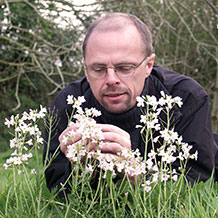The Warming Earth - Climate change is making animals move.
Animals are reacting to climate change very quickly.
Some move to higher places, others move north or south.
Dragonflies love warmer temperatures.
UK dragonflies have mainly stayed in the south of the country, until recently.

"So much has happened to dragonflies in Britain since the 1990s that there is a most compelling case for the Government to adopt them as indicators of climate change", said Steve Brooks.

They are moving away from the equator at 17.6 kilometres per decade.

“We have for the first time shown that the amount by which the distributions of species have changed is correlated with the amount the climate has changed in that region.”
I-Ching Chen and her colleagues discovered that moths had on average moved 67 metres uphill on Mount Kinabalu in Borneo.

Some move to higher places, others move north or south.
Dragonflies love warmer temperatures.
UK dragonflies have mainly stayed in the south of the country, until recently.

Ruddy Darter (Sympetrum sanguineum)
That is over 2km per year..... nearly 6 metres per day.
For example, the ruddy darter (Sympetrum sanguineum) and the hairy dragonfly, (Brachytron pratense), have moved into north-west England.
For example, the ruddy darter (Sympetrum sanguineum) and the hairy dragonfly, (Brachytron pratense), have moved into north-west England.
This is evidence that the UK’s climate is growing warmer.
"So much has happened to dragonflies in Britain since the 1990s that there is a most compelling case for the Government to adopt them as indicators of climate change", said Steve Brooks.

Scientists from the University of York found that, on average, living things have "moved uphill" at 12.2 metres per decade.
They are moving away from the equator at 17.6 kilometres per decade.
“These changes are equivalent to animals and plants shifting away from the Equator at around 20 cm per hour, for every hour of the day, for every day of the year.
This has been going on for the last 40 years and is set to continue for at least the rest of this century.”
Dr I-Ching Chen said: “We have for the first time shown that the amount by which the distributions of species have changed is correlated with the amount the climate has changed in that region.”
I-Ching Chen and her colleagues discovered that moths had on average moved 67 metres uphill on Mount Kinabalu in Borneo.

The Comma butterfly has moved 220 kilometres northwards from central England to Edinburgh, in only two decades.
Birds in North America are showing similar changes.

Birds in North America are showing similar changes.

